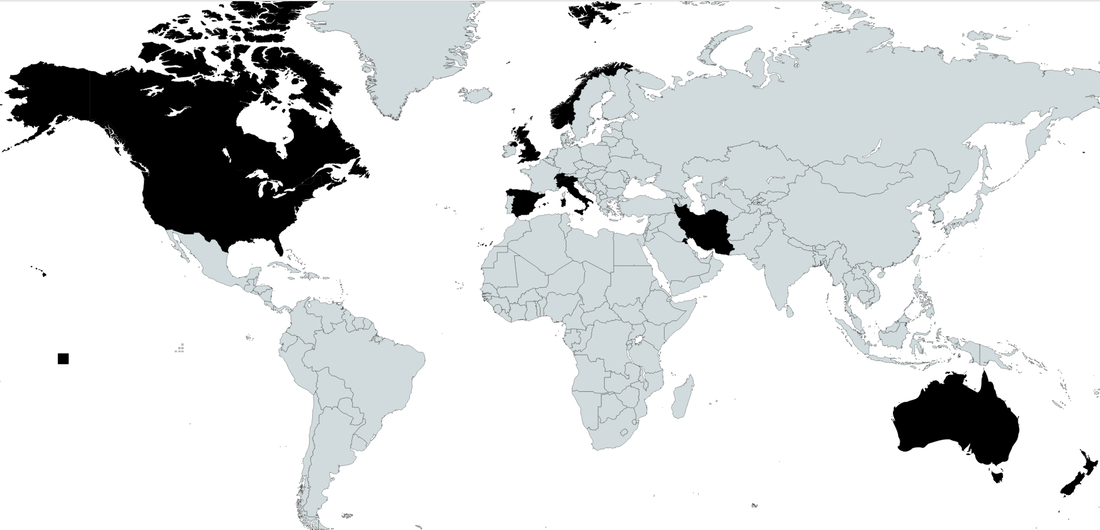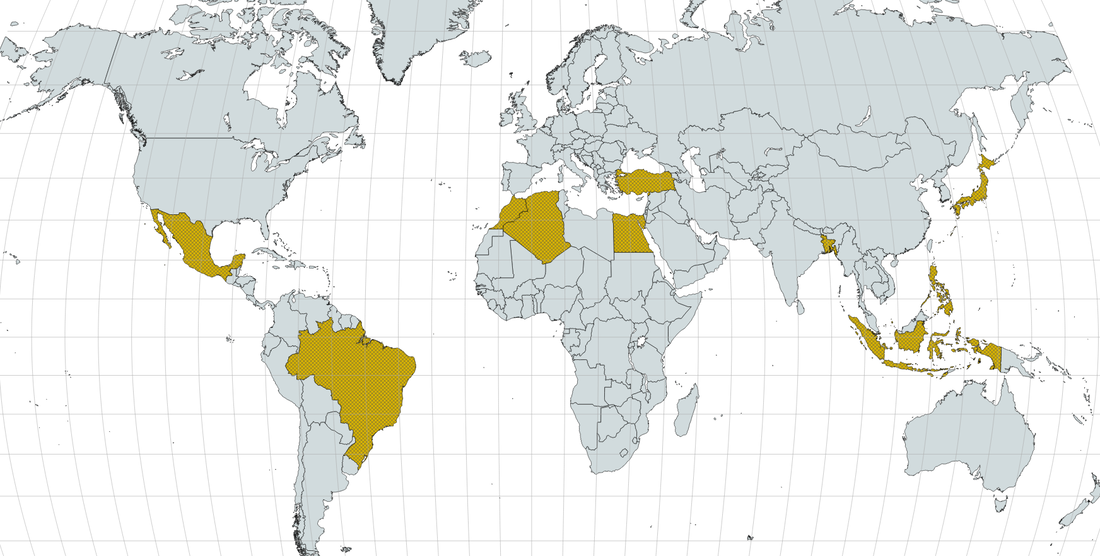|
This interesting piece from Foreign Policy examines "intifada," what it means literally, what it has meant in practice, and why making it a forbidden term is problematic.
"There has been too little clarity about the meaning and implications of the word intifada, though. It derives from the Arabic verb nafada, which means “to shake off,” in the sense of shaking dust off one’s clothes, say, or shaking off lethargy. The word intifada, then, literally translates as a “shudder” or “shiver,” or when used in a political context, a “popular uprising.” It does not mean genocide. The word intifada became familiar to newsreaders worldwide in 1987, when the term was used to describe a popular uprising mounted by Palestinians that year against Israel. That uprising, which lasted until the early 1990s and came to be known as the First Intifada, began as a largely peaceful protest movement involving acts of civil disobedience, such as strikes and boycotts, but it became more violent later on, partly in reaction to the harsh Israeli security response. According to the Israeli human rights group B’Tselem, nearly 2,000 people were killed during the First Intifada, with the ratio of Palestinian to Israeli deaths slightly more than 3-to-1. The Second Intifada, which took place roughly from 2000 to 2005, was far more violent—Palestinian militants carried out more than 130 suicide bombings in Israel, the West Bank, and Gaza between October 2000 and July 2005—as was its suppression by Israel. More than 4,300 people were killed, again with a ratio of Palestinian to Israeli deaths slightly more than 3-to-1. (In the current conflict, the ratio of Palestinian to Israeli deaths since Oct. 7 is a little less than 15-to-1, not including Palestinians killed in the West Bank.) Neither of these uprisings came anywhere close to being genocides. With the conflation of intifada with genocide seemingly now well underway, though, the world must ask itself: What does it mean to say that the act of rising up, or civil uprising, by Palestinians is impermissible? Do we really mean to say that they should not be able to resist against a miserable, constricting fate that has locked large numbers of their people into hopeless lives in Gaza, or that they should resolve themselves to seeing lands in the West Bank that they once controlled and lived on steadily annexed by Israel while they increasingly come under violent attack? ... Most importantly of all, does it mean that Palestinians must be silent, abandon demands for a state of their own, and merely accept whatever Israel deems is sufficient for them? Have people who hold this view paused to think what avenues are open to Palestinians to object to such things? Can they imagine themselves, for an instant, accepting this?" foreignpolicy.com/2023/12/14/harvard-university-president-testimony-intifada-genocide-israel-gaza-war
0 Comments
Israel depends on foreign labor in its agricultural sector, which accounts for the large number of Thai citizens kidnapped by Hamas on Oct. 7. Since the war began, an estimated 15,000 farmworkers have left Israel. This week the African country of Malawi announced that it is sending at least 5,000 replacement farmworkers to Israel. The deal was announced "two weeks after the Israeli government announced a $60 million aid package for Malawi," one of the world's poorest countries as measured by per capita GDP. www.nytimes.com/live/2023/11/28/world/israel-hamas-gaza-war-news#malawi-plans-to-send-thousands-of-farmworkers-to-israel
For those following the war between Israel and Hamas, the New York Times is posting maps here: www.nytimes.com/interactive/2023/10/07/world/middleeast/israel-gaza-maps.html
This satellite image, from Al Jazeera, shows the location of the two dams on the Wadi Derna in far northeastern Libya that collapsed earlier this week following unusually heavy rains. The dams were built in the 1970s by a Yugoslavian company as part of a project to provide reservoirs and an irrigation network for communities in the region. Although Libya is not considered especially vulnerable to climate change, Notre Dame's Global Adaptation Initiative had previously flagged Libya's dam capacity as a significant vulnerability. www.aljazeera.com/wp-content/uploads/2023/09/INTERACTIVE-Libya-Derna-floods-Storm-Daniel-1694506930.png
Most people are familiar with the concept of life expectancy. Less familiar are the many variants on life expectancy, including "healthy life expectancy" (HALE), which is defined by the World Health Organization as the "average number of years that a person can expect to live in 'full health' by taking into account years lived in less than full health due to disease and/or injury." This map shows the countries with the largest gap between life expectancy and healthy life expectancy -- or, thought of another way, with the most years of unhealthy old age -- as of 2019. The U.S. tops the list, with a gap of 12.4 years, followed by Australia, at 12.1 years. Completing the top 10 are New Zealand, the UK, Norway, Spain and Italy (tied), Iran, and Canada, Kuwait, and Switzerland (tied).
It's impossible to avoid the heat and drought stories this summer. This one is about Iran and how extreme water scarcity is shaping political protest, basic livability -- two provinces are expected to run out of municipal water completely by September -- and the geopolitics of the region. www.nytimes.com/2023/07/23/world/middleeast/iran-heat-water.html
Iran has executed at least 307 people so far this year, including 142 in May alone, a 76% increase over last year. According to Amnesty International, only China executes more prisoners than Iran. This map from Statista looks at the status of the death penalty globally: www.statista.com/chart/25211/death-penalty-world-map/
On Sunday, Türkiye (Turkey) will be holding its presidential election, and the Kurdish vote is likely to play a significant role. This map, which redraws current borders in the Middle East based primarily on dominant nationality, hints at the geographic extent of the Kurdish population in Türkiye and in neighboring countries. brilliantmaps.com/new-middle-east/
Is it possible to retain a liberal democracy* without an independent judiciary? That's the question behind huge protests in Israel over the last two weeks. Earlier this week, for example, an estimated 100,000 protestors took to the streets in Jerusalem to demonstrate against the government's plan to allow the legislature to void decisions of the country's supreme court. But for other Israelis, the judiciary is seen as subverting the will of the voters by overturning laws passed by the legislature. (*In political science, a "liberal" democracy is one that respects civil liberties, not one that espouses progressive values.) www.nytimes.com/2023/02/13/world/middleeast/israel-judicial-protests-netanyahu.html
A handful of acres in Jerusalem contain some of the holiest sites of both Islam and Judaism, as this map suggests. The accompanying article from The Washington Post explains why the area is a religious and political flashpoint and why it may be in the news more often with Israel's current government: www.washingtonpost.com/world/2023/01/05/temple-mount-al-aqsa-ben-gvir-israel/
For more than 7 years, Egypt has been planning and building a new capital city 40 miles east of Cairo. New Administrative Capital, as the city is called, is not yet complete, but civil servants are being asked to move to the new capital beginning this month, in the hope that other Egyptians will follow: www.wsj.com/articles/egypt-is-spending-billions-on-a-new-capital-that-egyptians-may-not-visit-11671838772
The Middle East Institute, a nonpartisan think tank specializing in issues related to the greater Middle East, presents its recommendations for the top 10 books published in the last year related to the Middle East: www.mei.edu/blog/10-books-expand-your-knowledge-middle-east
Negotiations over a "cap" on the price paid for Russian oil has been in the news recently. This geo-graphic from Al Jazeera highlights Russia's role in global oil markets: bucket.mlcdn.com/a/2764/2764870/images/e37fb5d7fa9398245e8017714bc383775d23a256.png
Liquifying natural gas is a more expensive, energy-intense alternative to pipelines in the delivery of natural gas. Several European countries are trying to bring more liquified natural gas (LNG) capacity online as quickly as possible to replace Russian, pipeline-delivered gas. This geo-graphic from Statista looks at which countries are currently the biggest suppliers of LNG: www.statista.com/chart/27839/biggest-liquefied-natural-gas-exporters
Europe's record-shattering heat has been in the news, but "Qatar is heating faster than almost anywhere else on the planet, the consequence of being a peninsula surrounded by overheating seas in one of the hottest corners of the world." This article from Geographical (UK) looks at what climate change means for Qatar and how the country is responding: geographical.co.uk/climate-change/climate-and-qatar?
World Refugee Day was earlier this week. Although Ukrainian refugees -- now numbering 5.2 million -- have dominated the news this year, this map from Statista is a reminder that Ukrainians are just a fraction of the world's refugees: www.statista.com/chart/18436/total-number-of-refugees-by-origin-country
In some ways, the violent re-ordering of Hindus, Muslims, and Sikhs that flowed from Indian and Pakistani independence in 1947 has overshadowed the violent re-ordering of Jews, Muslims, and Christians that flowed from Israeli independence the following year. Concerned about denialism and "memoricide" of the latter event, the Middle East Institute, a broad-based nonpartisan think tank in Washington, DC, has published a new paper based on diplomatic documents in the U.S. archives about what U.S. diplomats knew was happening on the ground in Israel/Palestine in 1948: www.mei.edu/publications/five-things-united-states-knew-about-nakba-it-unfolded
As of late last month, an estimated 4 million people had left Ukraine, 9% of the population. This geo-graphic from Statista, based on data from the UN High Commissioner on Refugees, puts Ukraine in the context of previous refugee crises since 1960: www.statista.com/chart/27151/largest-refugee-crises-since-1960-by-peak-number-of-refugees
Not surprisingly, Russia has become the most sanctioned country in the world, with nearly 6,000 different sanctions targeting individuals and/or governmental entities. This geo-graphic from Statista looks at the countries with the most international sanctions. cdn.statcdn.com/Infographic/images/normal/27015.jpeg
Egypt was once the bread basket of the ancient world. Today, it is the world's biggest importer of wheat. This map features the 10 biggest importers of wheat over the last 4 years -- with Egypt, Indonesia, and Turkey in the top three -- suggesting these countries are likely to feel the pinch of rising wheat prices and possible wheat shortages with Russian and Ukrainian wheat off the market. Egypt's heavy reliance on imported wheat coupled with its long political tradition of subsidizing bread makes it particularly vulnerable to crisis.
Biogeography includes the study of the geographic distribution of microbes, and right now researchers are watching intently the intersection of a virulent new strain of bird flu and the spring bird migration. About 6,000 wild cranes migrating through the Levant -- nearly 20% of the migrating Eurasian crane population -- have died of the disease and forced a cull of more than 1 million domestic chickens in Israel, for example. In the U.S., a bird flu outbreak first identified among domestic turkeys in Indiana has begun to spread to other states just as North America's spring bird migration gets underway. foodinstitute.com/focus/us-bird-flu-outbreak-has-poultry-operators-on-edge/
Egypt's Wadi Al-Assiut protectorate (just west of the Nile, roughly half way between Cairo and Luxor) is home to many rare plants and animals, including the last hives of an Egyptian bee whose honey and venom have been used therapeutically since pharaonic times. www.al-monitor.com/originals/2021/11/neglected-egyptian-nature-reserve-home-last-pharaonic-honey-bees
After a decade of civil war and economic collapse, Syria has become the newest narcostate, with the Syrian Army and businessmen close to Syrian president Bashar al-Assad overseeing the production and distribution of captagon, an illegal amphetamine popular in the Arab world. Captagon is now Syria's most profitable export, by far, with captagon labs scattered across government-held regions of Syria. www.nytimes.com/2021/12/05/world/middleeast/syria-drugs-captagon-assad.html
Saudi Arabia is planning a new city. What makes this city different is that it is supposed to be a super-technologically advanced octagon-shaped industrial city floating in the Red Sea and powered entirely by clean energy. interestingengineering.com/a-floating-city-saudi-arabia-is-building-the-worlds-largest-sea-based-industrial-site
Recent street battles in Beirut -- reportedly started when Christian militias fired on Shi'ite protesters, who then fired back -- brought Lebanon's complex religious geography back into the news. This map, based on voter registration data because Lebanon has not had an official census since 1932, illustrates the issue:
i.pinimg.com/originals/be/0f/96/be0f960be4f6f80b6dfec38eaea99ab6.jpg |
Blog sharing news about geography, philosophy, world affairs, and outside-the-box learning
Archives
December 2023
Categories
All
|


 RSS Feed
RSS Feed